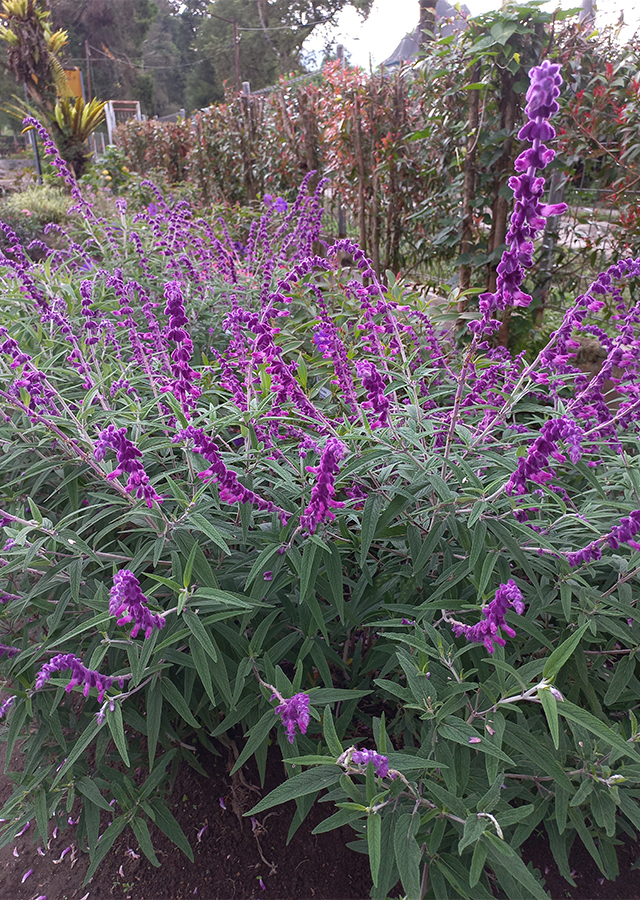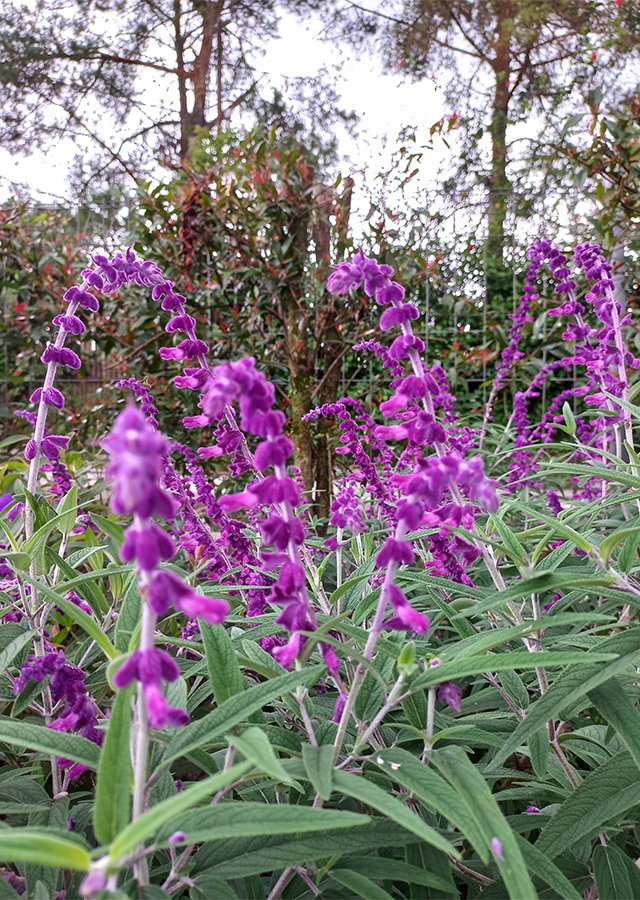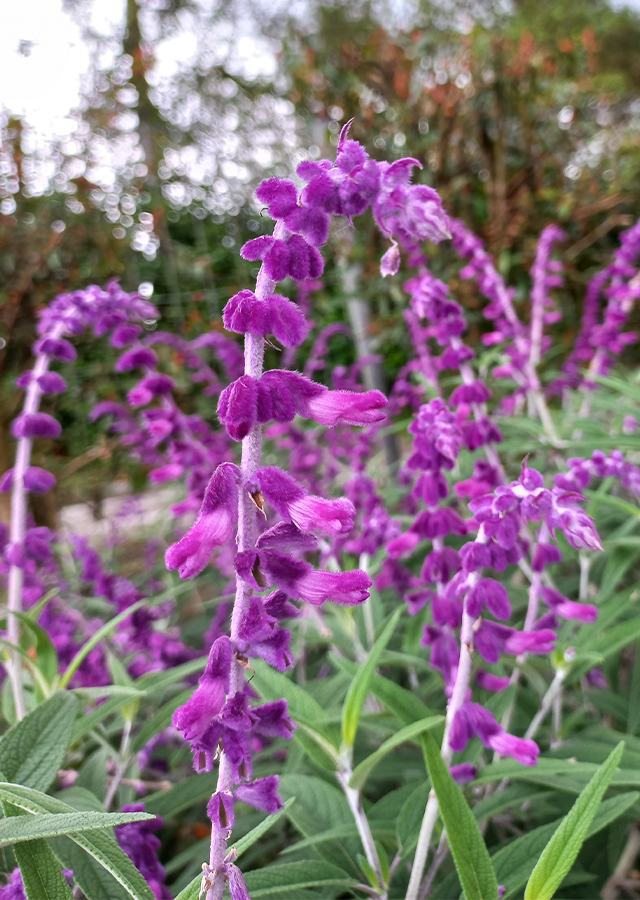Mexican Bush Sage
Salvia leucantha Cav.
Lamiaceae
Location in our garden
Principal



Synonym
Salvia bicolor Sesse & Moc.
Salvia leucantha f. iobaphes Fernald
Habitus
Herbaceous. An evergreen perennial plant with branched stems that can become more or less woody and persist; it forms a loose, spreading mound around 60 - 120 cm tall and as much wide
Part Used
The Whole Plant
Growing Requirements
Full Sunshine
Drought Resistant
Habitat
Roadside
Terrestrial
Overview
Salvia leucantha, commonly called Mexican bush sage, is an evergreen shrubby perennial that is native to Central America and Mexico. It is often grown as an ornamental, valued especially for its flowering display, and is sometimes grown as a hedge.
Vernacular Names
No information found.
Agroecology
Grows well in an average to rich, evenly moist, well-drained soils in full sun. Tolerates some light afternoon shade, but generally is best when growing in full sun. Also tolerates some drought, but does best with regular moisture.
Morphology
- Stems - square, striking white and hairy, branched, erect and often curved at the ends.
- Leaves - lanceolate-linear, 10–20 cm long, pointed leaf tip, serrated leaf margin, rugose-like leaf surface, pinnate leaf bone, grayish green, velvety textured, pubescent (short and soft hair) above, tomentose (furry like wool) below.
- Flowers - have a purple or white crown covered by thin velvety hairs, funnel-shaped petals, purple, the flower bracts are ovate, pointed, shorter than the petals, arranged in a circle at each node.
- Fruits - small, reddish brown.
Cultivation
Propagated by seeds and cuttings.
Chemical Constituents
Sesquiterpene hydrocarbons (6.9-guaiadiene, (E)-caryophyllene, bornyl acetate, germacrene D, (E)-β-farnesene, and bicyclogermacrene), flavonoids (quercetin-3-O-α-L-rhamnopyranosyl-(16)-β -D-glucopyranoside).
Traditional Medicinal Uses
- Relieves cough, chest pain, lung and stomach pain.
- Heals wounds.
- Has activity as an antioxidant, antimicrobial, antibacterial, antispasmodic, neuroprotective (protects or reduces nerve damage), anticancer and anti-Alzheimer's.
Part Used
Reference Sources
- Royal Botanic Gardens. 2021. Plants of the World Online: Salvia leucantha Cav. http://powo.science.kew.org/taxon/226705-2. 17-01-22
- Useful Temperate Plants Database. 2021. Salvia leucantha. http://temperate.theferns.info/plant/Salvia+leucantha. 17-01-22
- Villalta G. et. al. 2021. Selective BuChE Inhibitory Activity, Chemical Composition, and Enantiomeric Content of the Essential Oil from Salvia leucantha Cav. Collected in Ecuador. Plants 10, 1169. https://doi.org/10.3390/plants10061169. 17-01-22
- Rajamanickam M., Kalaivanan P., Sivagnanam P. 2013. Antibacterial and Wound Healing Activities of Quercetin-3-O-Α-L-Rhamnopyranosyl-(16)-β-D-Glucopyranoside Isolated from Salvia leucantha. Int. J. Pharm. Sci. Rev. Res., 22(1): 264-268. 17-01-22
- Gilman E. F., Marshall E. 1999. Salvia leucantha. Cooperative Extension Service. Insdtitute of Food and Agricultural Sciences. University of Florida. 17-01-22
